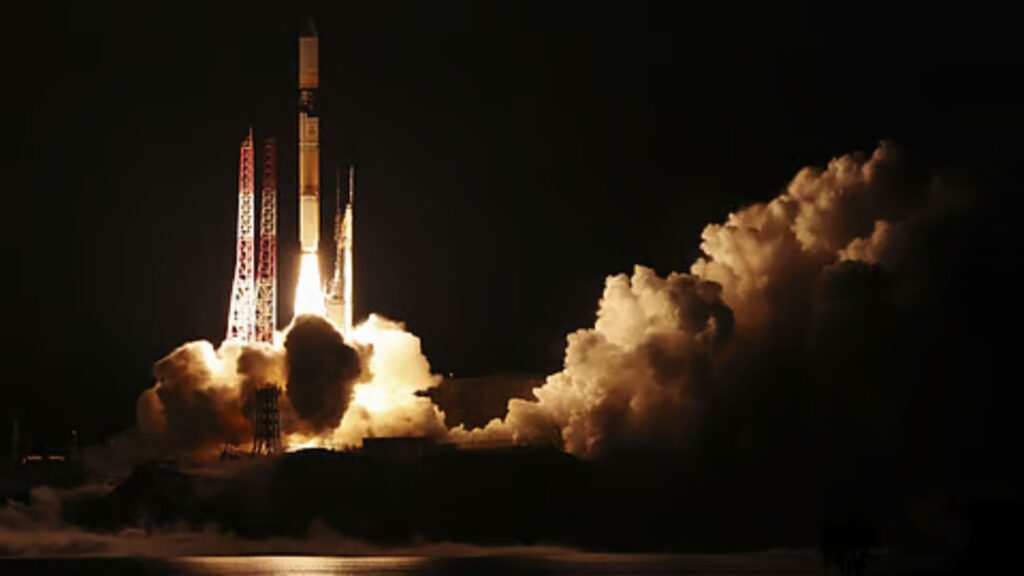Japan marked the end of an era in space exploration with the final launch of its H-2A rocket, successfully sending the GOSAT-GW satellite into orbit. The launch took place at 12:33 p.m. Eastern Time from the Tanegashima Space Center, with the satellite reaching its sun-synchronous orbit approximately 16.5 minutes later.
Operated by the Japan Aerospace Exploration Agency (JAXA), the mission carried the Global Observing Satellite for Greenhouse Gases and Water Cycle—also known as GOSAT-GW or Ibuki-GW. Built by Mitsubishi Electric Corporation, the 2,600-kilogram spacecraft is designed to collect critical environmental data for at least seven years.
GOSAT-GW is equipped with two major scientific instruments: a microwave scanning radiometer to assess water levels in land, ocean, and atmosphere, and a spectrometer dedicated to monitoring greenhouse gas concentrations. According to JAXA, the satellite deployed successfully and extended its solar arrays as planned.
The launch marked the 50th and final flight of the H-2A, a workhorse in Japan’s space fleet since its debut in 2001. Over its 24-year history, the H-2A achieved 49 successful missions, with only a single failure in November 2003 due to a solid rocket booster malfunction.
Initially developed as an improved version of the H-2 rocket, the H-2A was used primarily for JAXA’s Earth and space science projects, as well as for deploying military reconnaissance satellites. It also completed a limited number of commercial missions, launching satellites for international clients such as Inmarsat and Telesat. However, its relatively high cost and infrequent launches made it less competitive in the commercial market.
The broader H-2 family included the H-2B variant, which launched nine missions between 2009 and 2020, each carrying HTV cargo spacecraft to the International Space Station.
Japan had long planned to retire the H-2A in favor of the next-generation H3 rocket, designed for greater cost efficiency and launch frequency. While the H3’s initial launch in March 2023 ended in failure due to a second-stage ignition issue, the vehicle successfully reached orbit on its second attempt in early 2024. It has since completed three additional missions, the latest in February 2025.
The H-2A’s final flight was part of a globally active launch day, with three other orbital missions taking place within a 13-hour window. These included a Rocket Lab Electron launch for a confidential commercial payload, and two SpaceX Falcon 9 launches of Starlink satellites—one from Florida and another from California.
With the H-2A now officially retired, Japan’s space ambitions rest on the performance and scalability of the H3 rocket, signaling a new chapter in the nation’s quest for reliable and cost-effective space access.

